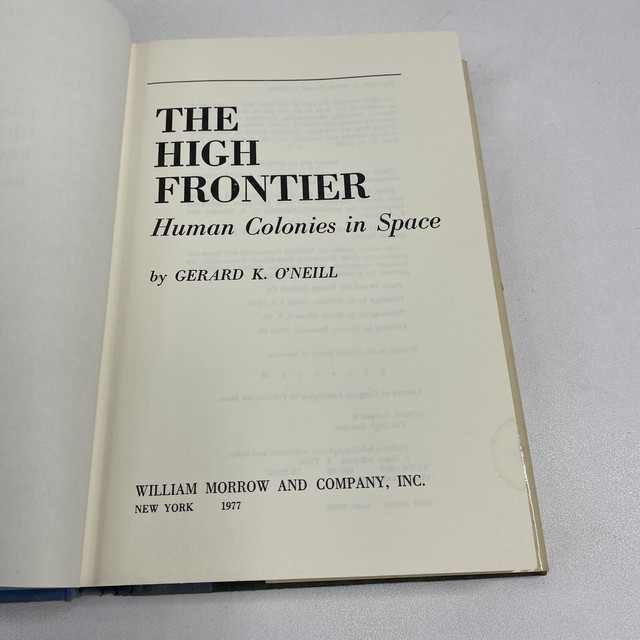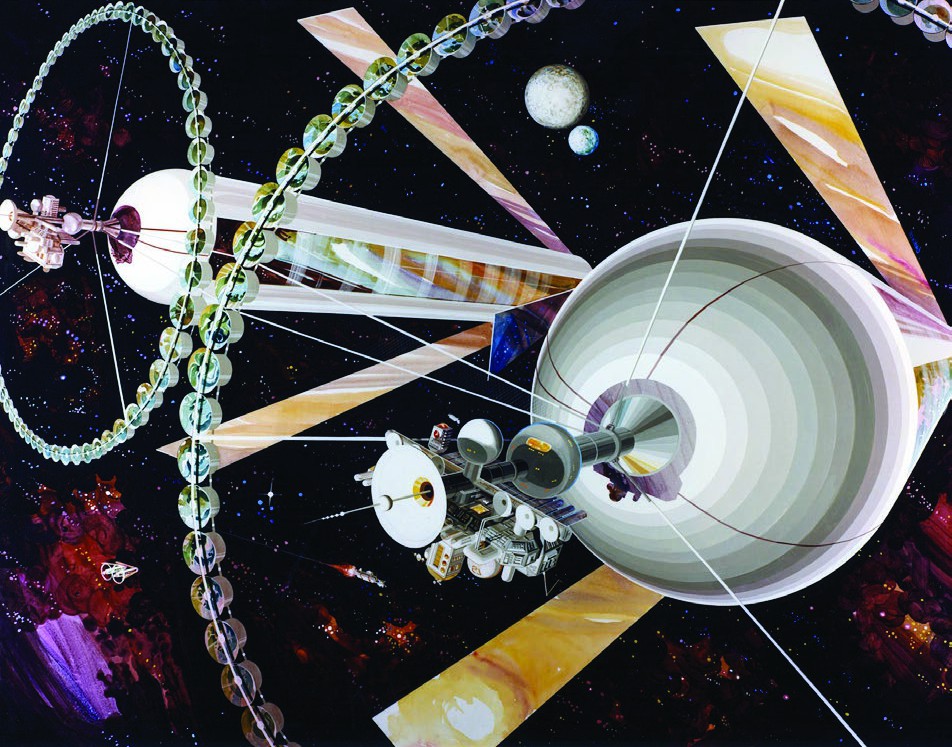

Cutaway View of Torus Space Colony, Rick Guidice, c. Construction Crew at Work on Bernal Sphere Colony, Don Davis, 1976. 4 Endcap View of Cylindrical Colony with Suspension Bridge, Don Davis, c. Fresh strawberries would be available throughout the year. 3 Yet, unlike Earth, there would be no unproductive workers, no pollution, no limits to energy consumption, no garden-destroying pests. With an abundance of material goods, endless sunshine, “virtually unlimited” resources harvested from outer space, freedom to travel, and, as he repeatedly underscored, “independence from large-scale governments,” pioneering colonists were promised attractive, self-sufficient, profitable, Earth-like environments. Liberated not only from gravity and friction but also from inhospitable climates, material scarcity, “large scale governments,” and other Earthly threats, O’Neill’s space colonies were imagined to take the form of giant, rotating, man-made habitats (initially in cylindrical form) that would replicate, or so he insisted, the most beautiful parts of Earth, exemplified for him by Carmel Bay, California, along with the Grand Teton mountains in Wyoming, the island of Bermuda, and “attractive villages in Italy and Southern France.” 2 His space colonies were represented at this time by technical diagrams, supplemented by a powerful and distinctly neoliberal narrative. O’Neill, a renowned high-energy particle physicist. Walter Sullivan, a prominent science journalist, reported on an event convened three days earlier at Princeton University by physics professor Gerard K. It identifies Lagrange Libration point 5 (or L5), a point of stable equilibrium between the sun, the earth and its moon, as an ideal site for the first space colony, since the colony could retain its position within this celestial orbit without having to accelerate.


On May 13, 1974, front page headlines in the New York Times read, “Proposal for Human Colonies in Space Is Hailed by Scientists as Feasible Now.” 1 The article was illustrated with a rather prosaic diagram modeled after eighteenth-century mathematician Joseph Louis Lagrange’s hypothesis on celestial mechanics. The following essay will appear in Climates: Architecture and the Planetary Imaginary, published this spring by the Avery Review and Lars Müller Publishers.


 0 kommentar(er)
0 kommentar(er)
